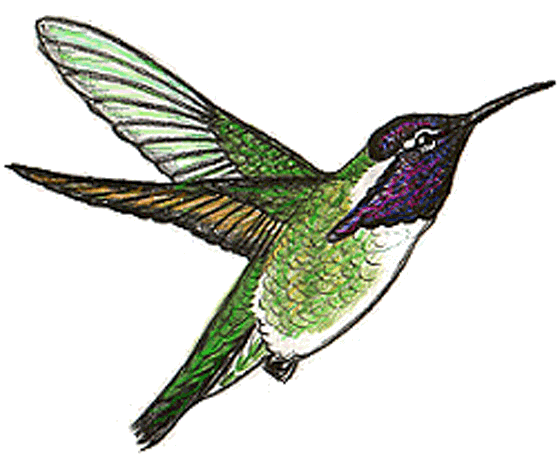
Claude on NBC 7/39 on Wednesday, March 6, 2013: click here Visual impairment does not stop him from birding!!!
Latest report the restored Landfills in Europe help flowers as well as their polinators Click here to read it.
Science Daily
Spiders, Not Birds, May Drive Evolution of Some Butterflies
Mar. 12, 2013 - <snip>
In the first behavioral study to directly test the defense mechanism of hairstreak butterflies, UF lepidopterist Andrei Sourakov found
that the appearance of a false head -- a wing pattern found on hundreds of hairstreak butterflies worldwide -- was 100 percent
effective against attacks from a jumping spider. The research published online March 8 in the Journal of Natural History shows
small arthropods, rather than large vertebrate predators, may influence butterfly evolution.
"Everything we observe out there has been blamed on birds: aposematic coloration, mimicry and various defensive patterns like
eyespots," said study author Andrei Sourakov, a collection coordinator at the Florida Museum of Natural History's McGuire Center
for Lepidoptera and Biodiversity on the UF campus. "It's a big step in general and a big leap of faith to realize that a creature as tiny
as a jumping spider, whose brain and life span are really small compared to birds, can actually be partially responsible for the great
diversity of patterns that evolved out there among Lepidoptera and other insects."
Sourakov's behavioral experiments at the McGuire Center showed the Red-banded Hairstreak butterfly, Calycopis cecrops, whose
spots and tail imitate a false head, successfully escaped all 16 attacks from the jumping spider,Phidippus pulcherrimus. When 11
other butterfly and moth species from seven different families were exposed to the jumping spider, they were unable to escape
attack in every case. Sourakov videotaped the experiments and analyzed the results in slow motion.
"From the video, you can see the spider is always very precise," Sourakov said. "In one video, the spider sees a moth that looks
like a leaf and it walks very carefully around to the head and then jumps at the head region. The spider has an innate or acquired
ability to distinguish the head region very well and it always attacks there to deliver its venom to the vital center to instantly
paralyze the prey. Most importantly, the spider is very small, so sometimes its prey is 10 times larger."
The species of hairstreak butterfly and jumping spider used in the experiment are both common in the southeastern U.S., with
similar relatives spread worldwide. In nature, the spider and hairstreak come into contact when the butterfly lands on leaves or
flowers to rest and feed. Female red-banded hairstreak butterflies lay their eggs in leaf litters, which are often crawling with spiders.
David Wagner, a professor of ecology and evolutionary biology at the University of Connecticut who was not involved with the study,
said the research shows scientists need to rethink what drives adaptive coloration patterns because the results suggest that "birds
are only part of the story."
"I'm just so impressed with Andrei's experimental protocol and the fact that the jumping spider could not catch the hairstreak
butterflies," Wagner said. "His empirical study will do much to cause us to rethink the vision and the visual acuity that certain
invertebrate predators have when hunting their prey and how this has really molded how some organisms not only look like, but
perhaps how they act, as well."
Unlike other butterflies, hairstreaks constantly move the hind wings that carry the false head pattern, a behavior that seems to
increase in the presence of the spider, as if the butterfly is attracting attention to itself, Sourakov said. In museum collections,
hairstreak specimens are frequently found with the false-head portion of the wings missing. During the experiments, the spider
always attacked the butterfly's false head, thereby avoiding its vital organs.
"The false head hypothesis in hairstreaks has been in circulation for a long time because people always speculated that their tails
move around in order to fake out the predators, but there was little experimental evidence," Sourakov said.
Sourakov said he hopes the study encourages behavioral ecologists to further test the idea that evolution in butterflies and moths
may be driven by small invertebrate predators.
"This clearly shows it's possible that many spectacular patterns that we find in smaller insects may be due to spider pressure
rather than bird pressure," Sourakov said. "The butterfly escapes from the spider -- it's a fairytale story."
full text: http://www.sciencedaily.com/releases/2013/03/130312102547.htm
Journal Reference:
Andrei Sourakov. 2013. Two heads are better than one: false head allows Calycopis cecrops (Lycaenidae) to escape
predation by a Jumping Spider, Phidippus pulcherrimus (Salticidae). Journal of Natural History, 1 DOI:
10.1080/00222933.2012.759288 <http://dx.doi.org/10.1080/00222933.2012.759288>
Honeybees and Pollination continues to be a concern not just across the country but the world. The EPA has taken recent steps to help the pollination efforts. Check out the following article.

Klein-Edwards Professional Services